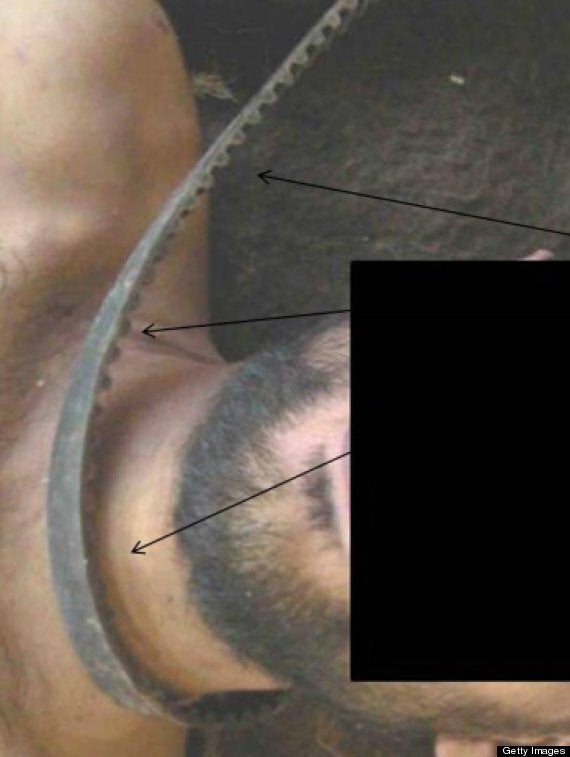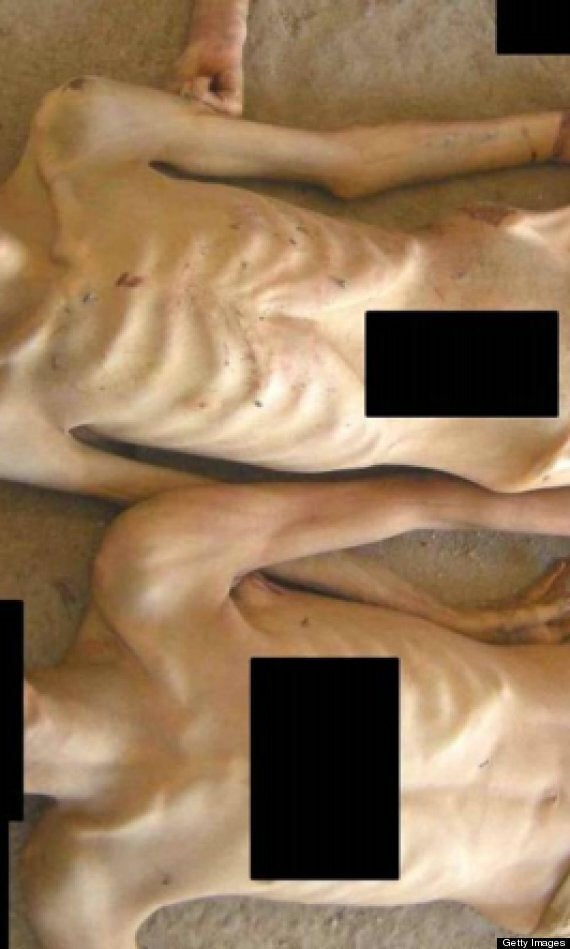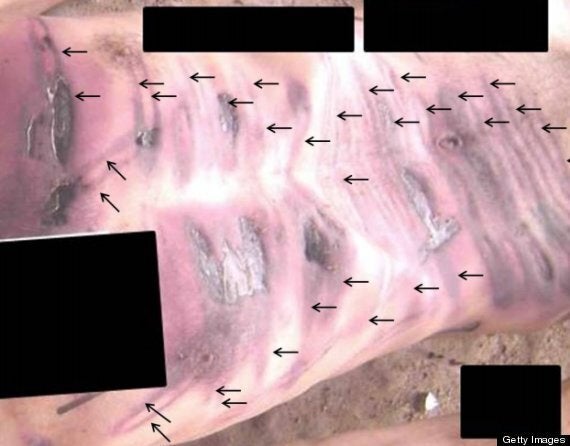
Syria has systematically tortured and executed 11,000 of its citizens in the three-year war, according to a report by former war crimes prosecutors, who compared the bodies they saw to images of Nazi death camp victims.
QC Sir Desmond de Silva, a former chief prosecutor of the Special Court for Sierra Leone told Radio 4's Today programme that images he saw of torture in Syria were comparable to Holocaust victims.
The investigators examined 55,000 images of dead prisoners which have been smuggled out of Syria. President Assad's government in Damascus has denied it is responsible for the horror.

One of the images examined by investigators
The anonymous 'Caesar', who was a military police photographer, defected from the government forces smuggling the horrific images of the dead out of the country on a memory stick.
Caesar told the investigators that his job had been to document the corpses, to confirm executions had been carried out as instructed.
"There could be as many as 50 bodies a day to photograph which require 15 to 30 minutes of work per corpse," the report quoted him as saying. All but one were male.
Now having left the country, Caesar, who the investigators called "truthful and credible witness" said he had shown the images to the investigators “for the sake of Syria and the Syrian people so that the killers could be prosecuted to achieve justice.”
As he planned his defection, Caesar arranged for a photograph of a group of bodies to be taken to show how the place group “looked like a slaughterhouse”, giving the excuse to his colleagues that they could be useful in case a body was missing.
The investigation found many showed signs of strangulation or electrocution, some had their eyes gouged out or severe wounds from beatings, and most were showing signs of starvation.
Peace talks are due to begin in Switzerland this week, with the Assad regime and main exiled opposition alliance, the National Coalition, due to meet tomorrow. More than 100,000 have died in the conflict, with millions made homeless.

Emaciated bodies photographed by the military photographer who defected
The investigation was commissioned by the government of Qatar, which supports the Syrian rebel movement.
As well as de Silva, the other investigators were Professor Sir Geoffrey Nice QC, the former lead prosecutor of Slobodan Milosevic, and Professor David Crane, the first Chief Prosecutor of the Special Court for Sierra Leone, as will as forensic pathologists, anatomy and imaging experts.
On Monday the UN secretary-general Ban Ki-moon withdrew an invitation he had made to Iran to attend the talks. The country is a key ally of the Assad government, but had refused to back any plan for a transnational government.
On Monday night, one of the UN's most senior leaders warned that Syria had regressed "35 years" since the start of the war.

Appalling injury on the body of one of the executed prisoners
Helen Clark, who was a Labour prime minister of New Zealand for nine years, stressed it was madness "if anyone seriously thinks there's a long term solution to Syrian crisis by military means... it has to be negotiated."
Speaking at the Women of the Year lecture in London, Clark, now the Administrator of the United Nations Development Programme which is the third most senior UN position, said she had firm hopes of peaceful dialogue this week as parties meet in Geneva. But she backed the original decision to invite Iran.
"Iran lends a lot of influence to the government of Syria. Iran must be there," Clark said.